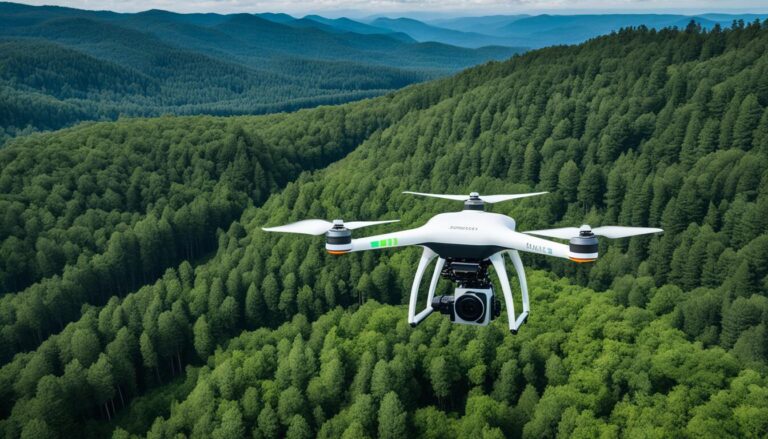The Impact Of Artificial Intelligence On Wildlife Conservation Efforts

Table of Contents
AI-Powered Monitoring and Surveillance
AI is revolutionizing how we monitor and protect wildlife. Advanced algorithms are transforming traditional conservation practices, offering unprecedented opportunities for effective wildlife management.
Improved Wildlife Tracking and Population Estimation
AI algorithms are proving invaluable in analyzing vast quantities of data collected through various methods. Camera traps, once requiring laborious manual review, now benefit from AI-powered object detection and image recognition. These algorithms can swiftly identify and count individual animals, providing far more accurate population estimates than previously possible. Drone footage and acoustic data are also being analyzed using AI, further enhancing our understanding of animal populations and behavior.
- Reduced human labor costs and time: AI automates time-consuming tasks, freeing up human researchers to focus on strategic conservation work.
- More accurate population data for effective conservation strategies: Precise population numbers inform evidence-based decision-making, leading to more effective conservation strategies.
- Real-time monitoring of animal movements and behavior: AI-powered tracking systems provide real-time insights into animal movements, migration patterns, and social interactions, aiding in understanding their ecological needs.
Anti-Poaching Technologies
AI is playing a crucial role in combating the illegal wildlife trade. Sensor networks deployed in protected areas can detect suspicious sounds or movements, triggering alerts to park rangers. Satellite imagery analysis using AI can identify deforestation patterns, often linked to poaching activities. Furthermore, AI can analyze behavioral data to identify potentially suspicious human activity, allowing for proactive intervention.
- Early warning systems for potential poaching events: AI systems can predict potential poaching hotspots, allowing rangers to strategically allocate resources and increase patrols in high-risk areas.
- Improved response times to poaching incidents: Real-time alerts enable faster responses to poaching events, potentially saving endangered animals and apprehending perpetrators.
- Enhanced law enforcement effectiveness: AI-powered analysis of large datasets can help identify poaching networks and improve the effectiveness of law enforcement efforts.
AI-Driven Habitat Analysis and Prediction
Understanding and protecting wildlife habitats is paramount for conservation success. AI offers powerful tools for analyzing habitat conditions, predicting future changes, and guiding restoration efforts.
Predictive Modeling for Habitat Loss
Machine learning algorithms can analyze environmental data – including climate models, deforestation rates, and land use changes – to predict future habitat loss. This is often done in conjunction with Geographic Information Systems (GIS) and remote sensing data. By identifying areas at high risk of habitat loss, conservationists can prioritize protection efforts and develop proactive mitigation strategies.
- Proactive conservation planning and mitigation strategies: AI-driven predictions allow for timely intervention, reducing habitat loss and safeguarding biodiversity.
- Identification of critical habitats for targeted protection efforts: AI helps pinpoint the most important habitats for specific species, allowing for focused conservation investments.
- Optimized resource allocation for conservation initiatives: Predictive models help allocate resources more efficiently, ensuring maximum impact for conservation efforts.
Habitat Restoration and Management
AI can optimize habitat restoration efforts by analyzing various factors, including vegetation patterns, soil conditions, and water availability. AI-powered decision support systems help determine the best course of action for restoring degraded habitats, improving the efficiency and effectiveness of restoration projects.
- Improved efficiency and effectiveness of restoration projects: AI-driven analysis ensures that resources are used optimally, leading to better outcomes for habitat restoration.
- Reduced costs associated with habitat restoration: Efficient planning and implementation reduce overall costs, maximizing the impact of conservation funding.
- Data-driven decisions for better conservation outcomes: AI allows for evidence-based decisions, enhancing the success rate of habitat restoration initiatives.
Challenges and Ethical Considerations of AI in Wildlife Conservation
While AI offers immense potential, it's crucial to acknowledge and address associated challenges and ethical considerations.
Data Bias and Algorithm Limitations
AI algorithms rely on data, and biased datasets can lead to inaccurate predictions or unfair outcomes. Furthermore, current AI algorithms have limitations; they are not perfect and require ongoing improvement and refinement.
- The importance of data quality and diversity: Careful data collection and curation are crucial to ensure the accuracy and fairness of AI-driven conservation efforts.
- The need for transparent and accountable AI systems: Transparency in algorithm design and decision-making processes is essential for building public trust and ensuring responsible AI implementation.
- The ongoing development of more robust and reliable AI algorithms: Continued research and development are necessary to improve the accuracy, reliability, and robustness of AI algorithms for conservation applications.
Privacy and Surveillance Concerns
The use of AI for surveillance raises concerns about animal privacy. Striking a balance between conservation needs and animal welfare is crucial. Ethical guidelines and responsible AI implementation are paramount.
- Balancing conservation needs with animal welfare concerns: Ethical considerations should guide the development and deployment of AI-powered surveillance systems.
- The need for public engagement and transparency: Open communication and public engagement are crucial for addressing concerns and ensuring responsible use of AI in conservation.
- Developing ethical frameworks for AI in wildlife conservation: Establishing clear ethical guidelines and frameworks will help navigate the complexities of using AI in conservation.
Conclusion
Artificial intelligence offers significant potential for addressing pressing challenges in wildlife conservation. From improved monitoring and anti-poaching technologies to predictive habitat analysis and optimized restoration efforts, AI is transforming how we protect biodiversity. However, careful consideration of ethical implications and ongoing development of robust and unbiased algorithms are crucial for responsible implementation. The future of wildlife conservation relies heavily on innovative solutions; embracing artificial intelligence responsibly is crucial for securing a future where biodiversity thrives. Learn more about how you can support AI-driven wildlife conservation efforts today!

Featured Posts
-
 Reprise De La Seance Du 24 Fevrier L Integrale Bfm Bourse
Apr 23, 2025
Reprise De La Seance Du 24 Fevrier L Integrale Bfm Bourse
Apr 23, 2025 -
 Bank Of Canadas Rate Pause Expert Analysis From Fp Video
Apr 23, 2025
Bank Of Canadas Rate Pause Expert Analysis From Fp Video
Apr 23, 2025 -
 Ftc Investigates Open Ais Chat Gpt What This Means For Ai Development
Apr 23, 2025
Ftc Investigates Open Ais Chat Gpt What This Means For Ai Development
Apr 23, 2025 -
 Good Morning Business Emission Du Lundi 24 Fevrier A La Demande
Apr 23, 2025
Good Morning Business Emission Du Lundi 24 Fevrier A La Demande
Apr 23, 2025 -
 Brewers Sweep Tigers In Series 5 1 Final Score
Apr 23, 2025
Brewers Sweep Tigers In Series 5 1 Final Score
Apr 23, 2025
